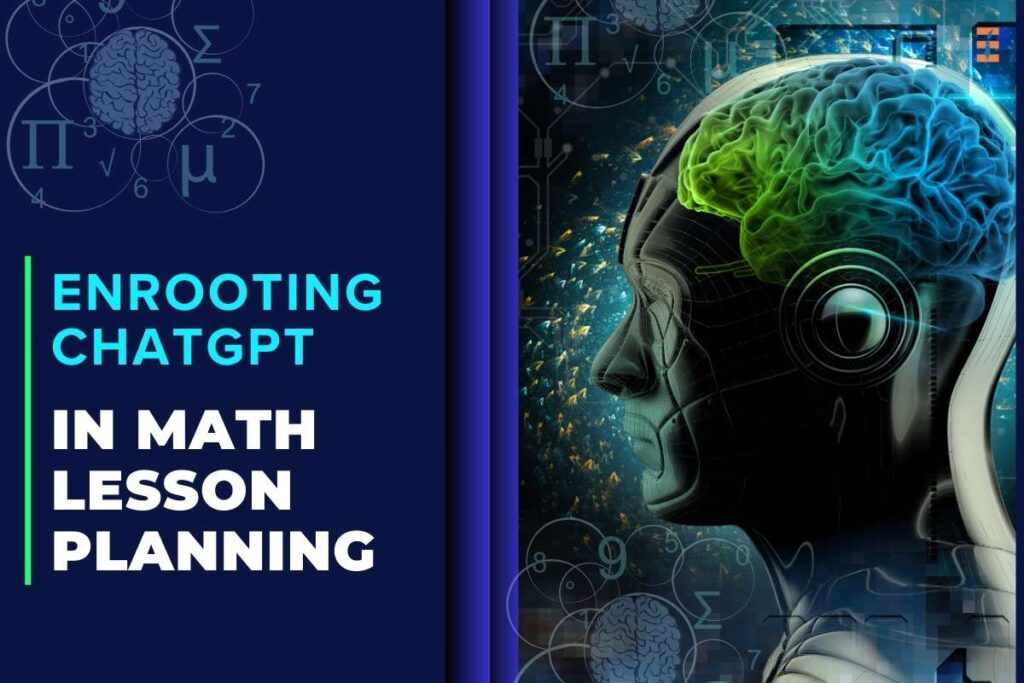Technology plays a pivotal role in reshaping the way teachers plan and deliver lessons in this continuously evolving education landscape. ChatGPT, a powerful AI language model developed by OpenAI, is at the forefront of this transformation. In this article, we will explore the innovative application of ChatGPT in math lesson planning, to see how this AI tool can assist educators in creating engaging and effective math lessons.
ChatGPT in Math: A Revolution in Lesson Planning
Lesson planning is the cornerstone of effective teaching, and math educators, in particular, are constantly seeking ways to make their lessons more engaging, comprehensive, and student-centered. ChatGPT, with its natural language understanding capabilities, offers a range of benefits for math educators looking to enhance their lesson planning process.
Here are 8 innovative application of ChatGPT in math lesson planning:
1. Generating Math Lesson Ideas
One of the primary challenges for math teachers is to come up with creative and engaging lesson ideas. ChatGPT can be a valuable resource in this regard. Teachers can input a topic or concept they want to cover, and ChatGPT can generate a variety of lesson ideas, complete with explanations and suggested activities. This not only saves time but also provides fresh perspectives and creative approaches to teaching math.
2. Explaining Complex Math Concepts

Mathematics often involves intricate and abstract concepts that can be challenging for students to grasp. ChatGPT can simplify complex ideas by providing clear and accessible explanations. Math teachers can input a specific concept or problem, and ChatGPT can break it down into step-by-step explanations, making it easier for students to understand. This is particularly helpful when dealing with advanced math topics in high school.
3. Creating Visual Aids and Worksheets
Visual aids and worksheets are essential for effective math instruction. ChatGPT can assist in creating these materials. Teachers can describe the type of visual aid or worksheet they need. ChatGPT can provide templates and designs and generate math problems and exercises suitable for different grade levels. This streamlines the process of creating teaching materials.
4. Adapting to Individual Student Needs
Every student is unique, and teachers often face the challenge of adapting their lessons to meet individual needs. ChatGPT can help by suggesting differentiated instruction strategies. By inputting information about a student’s learning style, strengths, and weaknesses, ChatGPT can recommend tailored approaches to ensure that all students have the opportunity to excel in math.
Related: Original Writing Vs ChatGPT: Setting Ground Rules for a Harmonious Coexistence
5. Solving Math Problems

Math teachers can use ChatGPT as a problem-solving tool. If they encounter challenging math problems or concepts while planning their lessons, they can input these problems, and ChatGPT can provide solutions and explanations. This feature is particularly useful for educators who want to deepen their understanding of mathematical concepts before teaching them.
6. Keeping Up with Curriculum Changes
Curriculum changes and updates can be a constant in the field of education. ChatGPT can help math teachers stay current with these changes. By inputting information about the curriculum, grade level, or specific standards, ChatGPT in math provide resources and lesson plans that align with the latest educational requirements.
7. Encouraging Critical Thinking
Math is not just about rote memorization; it’s about developing critical thinking skills. ChatGPT in math can suggest activities and questions that promote critical thinking and problem-solving. These activities challenge students to think beyond basic calculations and engage with math on a deeper level.
8. Supporting Remedial Math Education
For students who are struggling with math, ChatGPT can offer support in planning remedial lessons. Teachers can input information about a student’s specific difficulties, and ChatGPT can recommend exercises, activities, and resources to address these challenges effectively.
Challenges and Ethical Considerations

While ChatGPT in Math offers numerous advantages, it also raises certain challenges and ethical considerations.
- Overreliance on Technology: Teachers should be cautious not to become overly reliant on ChatGPT. It should complement, not replace, their expertise in teaching.
- Bias in Lesson Plans: ChatGPT’s recommendations are only as good as the data it has been trained on. Teachers should be aware of any potential biases in the AI’s suggestions and ensure that lesson plans promote diversity and inclusivity.
- Privacy and Data Security: When using AI tools, teachers should be diligent in protecting student data and ensuring that it is not misused.
- Customization: While ChatGPT is a powerful tool, it may not fully replace the need for customized lesson planning to cater to the specific needs of a class or individual students.
Conclusion
ChatGPT in Math is a groundbreaking development in the field of education. By leveraging this AI-powered tool, math educators can streamline their lesson planning process, access fresh ideas, and create more engaging and effective lessons. However, it’s essential to use ChatGPT as a complement to a teacher’s expertise, not a replacement. By maintaining a balance and being aware of ethical considerations, educators can harness the power of AI to enhance math education for students at all levels.










